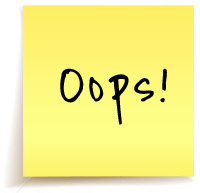Which books are best?
With so many choices of children’s books available, do you wonder which ones would be most beneficial for your child? Here are a few simple guidelines to help you choose the best books for your child.
The whole point of giving children books to read and of reading to them is to ‘switch’ them on to reading. So, the most important thing to remember when selecting books for your child is that whatever your child wants to read, is the best thing for him or her to read. Do not worry about whether a book is at the ‘correct’ reading level or on a ‘suitable’ topic or ‘well-written’ – a ‘good’ book is any book your child wants to read! This really is the most important guideline of all!
The graded readers that children get at school as part of their reading lessons have been designed to keep-it-simple – especially the first books in a series. This means that they have a much less varied use of language and vocabulary than storybooks. Good graded readers are a useful tool for teaching your child to read but on their own they are not enough. To give your children a richer, more balanced reading experience, choose storybooks or interesting information books for the times when you read to your children.
Try to give your children as wide a selection of books as possible. Regular visits to bookshops and the library are a great way of exposing them to lots of books. Notice which books they seem interested in and buy or borrow these ones. Of course, you may also want to encourage your children to try something new by choosing a book they’ve never see before. This is good idea but always remember that you’re taking a risk – your child might hate the story!
And what if your child really doesn’t like books? Then try other forms of reading material like magazines, comics and stories that you download on a computer or kindle.
It’s simple: children learn to read by reading so whatever we give them to read or read to them needs to encourage them to read more!

With so many choices of children’s books available, do you wonder which ones would be most beneficial for your child? Here are a few simple guidelines to help you choose the best books for your child.
The whole point of giving children books to read and of reading to them is to ‘switch’ them on to reading. So, the most important thing to remember when selecting books for your child is that whatever your child wants to read, is the best thing for him or her to read. Do not worry about whether a book is at the ‘correct’ reading level or on a ‘suitable’ topic or ‘well-written’ – a ‘good’ book is any book your child wants to read! This really is the most important guideline of all!
The graded readers that children get at school as part of their reading lessons have been designed to keep-it-simple – especially the first books in a series. This means that they have a much less varied use of language and vocabulary than storybooks. Good graded readers are a useful tool for teaching your child to read but on their own they are not enough. To give your children a richer, more balanced reading experience, choose storybooks or interesting information books for the times when you read to your children.
Try to give your children as wide a selection of books as possible. Regular visits to bookshops and the library are a great way of exposing them to lots of books. Notice which books they seem interested in and buy or borrow these ones. Of course, you may also want to encourage your children to try something new by choosing a book they’ve never see before. This is good idea but always remember that you’re taking a risk – your child might hate the story!
And what if your child really doesn’t like books? Then try other forms of reading material like magazines, comics and stories that you download on a computer or kindle.
It’s simple: children learn to read by reading so whatever we give them to read or read to them needs to encourage them to read more!


 Oops! We can’t find the article you are looking for. Please try a different Subject, Grade or Title.
Oops! We can’t find the article you are looking for. Please try a different Subject, Grade or Title.